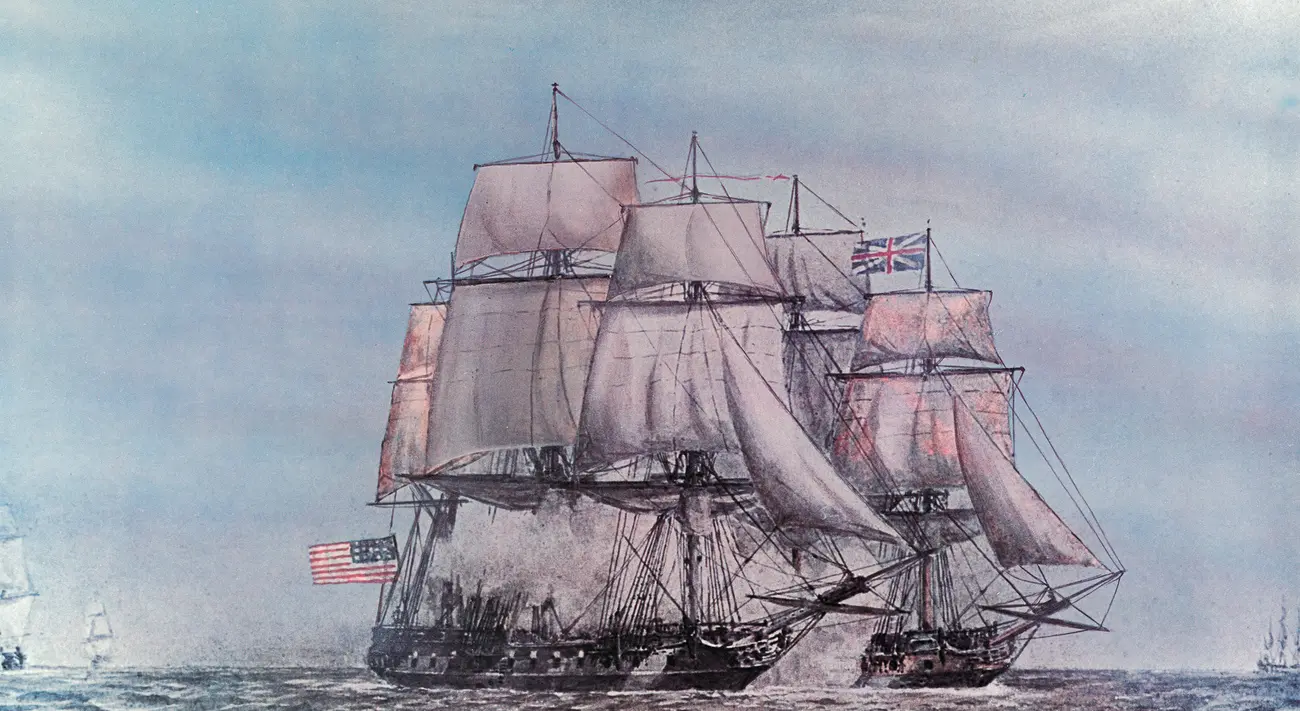The British controlled Florida from 1763 to 1783, encompassing the entire American Revolution. Florida remained loyal to England and King George III throughout the conflict.
The last naval battle of the American Revolution took place off of Cape Canaveral on March 10, 1783. Two American ships, the Alliance and the Duc de Lauzun, were on a mission to bring 72,000 Spanish silver dollars from Cuba to the American colonies to pay the Continental soldiers.
The American ships were intercepted by three British ships, the Alarm, the Sybil, and the Tobago at Cape Canaveral.
“I think in my article I refer to it as a two-ship treasure fleet on a secret mission to secure funding to pay the American soldiers that had been pretty much languishing for almost two years without pay in upstate New York and other places throughout the colonies,” says Brevard County Historical Commissioner Molly Thomas, who has written a series of three articles about the battle for the most recent issues of the Indian River Journal.
As the American ships carrying much needed funds for the Continental Army met with the British ships determined to stop them, one ship from each side took the lead in battle.
“Basically, you had two ships sailing north, and you had three ships sailing south,” says Thomas. “The ships heading north were the Americans, and the three sailing south were the British. Only the Alliance and the Sybil really engaged. The other two (British ships) the Tobago and the Alarm kind of lingered back a little bit, and didn’t get involved in the fight. The Duc de Lauzun just did its best to stay out of it because it couldn’t keep up with any of them.”
The HMS Sybil was under the command of James Vashon, and the USS Alliance was under the command of John Barry.
Vashon had received intelligence that the Duc de Lauzun was carrying money from Cuba. It was also the weaker of the two American ships, having removed most of her cannons and ammunition to lighten the load, to try to be faster.
“The Sybil started to go after the Duc,” says Thomas.
Barry saw an opportunity to position the Alliance between the Sybil and the Duc de Lauzun.
“So that’s when the actual fight started.”
Robert Morris of the Continental Congress was the mastermind of the secret plan to bring Spanish money from Cuba to fund the American Revolution. His plan led to the last naval battle of the war.
“He was the chief financier for a lot of things to do with the military and he was also what they called the Agent of Marine, which is basically like the Secretary of the Navy now,” says Thomas. “He was a self-made shipping mogul, so he had a lot of connections both in buying and selling ships. He actually purchased the Duc de Lauzun himself, and he also had a lot of access just in networking with people in other ports. So he was able to coordinate them going down to Havana to secure this money from a French financier.”
Ironically, the Treaty of Paris was signed more than a month before the last naval battle of the American Revolution occurred. No one in the Americas knew that the war was over, because word had not yet arrived from Europe. That knowledge may not have stopped the secret mission to Cuba, because America really needed the money.
“The Battle of Yorktown had already happened,” says Thomas. “Everything had stopped for the most part as far as hostilities went, but they wouldn’t disband the army. Despite all the many letters that George Washington had written, they refused to disband it because they didn’t actually believe that they were going to come to any terms. So, for that two year window after Yorktown and then this battle, the soldiers were not paid. They didn’t have the money to pay them.”
The Americans won the last naval battle of the American Revolution, and the mission to bring funds back from Cuba was successful.
Following the war, Florida would return to Spanish control in 1783, until becoming a United States Territory in 1821. Florida became a state in 1845.

